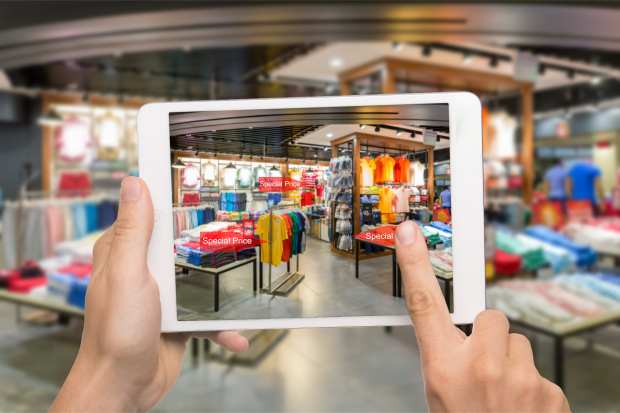Retail Tech May Lead A Resurgence … Someday

Believe it or not, there will be a time when the phrase “retail resurgence” replaces “store closings.” And research from Nielsen says it may come from retail technology.
The company says the potential for a major spending boost is driven by an overall acceptance of shopping technology. “Smart technology is becoming ubiquitous, artificial intelligence is powering our playlists, auto tech is parking our cars for us, and it’s time for our retail experiences to get in the game — especially in ways that help the 64% of global consumers who say their lives are getting busier,” said a recent Nielsen report.
Both in-store and hybrid technologies must combine automation, intelligence and personalization, the report said. For example in online grocery, a Nielsen study across 64 countries found that 87 percent of global shoppers are either using or willing to use automated and personalized solutions.
“In-store technology, such as navigation apps and Bluetooth-enabled shelf labels, can transform in-store experiences, helping shoppers find what they need in guided, useful and entertaining ways,” said Nielsen Global Intelligence Executive Director Ailsa Wingfield. “These technologies can draw shoppers to products, convey real-time information, provide reviews and promotions, all based on shopper preferences and habits, and combine function with fun to entice purchases.”
The report singled out Lowe’s as having transformed the in-store experience through an app that helps customers find what they’re looking for by locating items at their local store. The way it works, as explained in Digital Commerce 360, is when a consumer at Lowe’s opens the app and searches for products, they are added to a shopping list. Once all the items are in the virtual cart the consumer taps a “begin navigation” button. The app factors in the consumer’s location in the store relative to where the products are. The consumer holds the smartphone, which uses the camera lens, in front, and then follows the yellow line that appears on the screen. That line leads the consumer to the first product, with an image of the product appearing in the screen to ensure the consumer picks up the right product.
Technology has been a positive factor in leading China out of the COVID-19 darkness. In China’s major cities, groceries purchased online can be delivered to the home within as little as 20 minutes. Alibaba’s Cainiao network, for example, supports the supply chains of retailers via an artificial intelligence (AI)-enabled digital inventory system that links the online and offline shopping worlds. For this reason, Alibaba was shipping medical and food supplies into Wuhan province almost as soon as the epidemic was made public.
“Of course, the pandemic will subside — and Americans and Europeans will find ways to cope with its effects; the Chinese do not have a monopoly on creativity and solidarity,” said a March 10 article in Harvard Business Review. “But as the U.S. and Europe emerge from the coronavirus epidemic, their governments, cities, and businesses should look at how China’s digital advantages have helped it respond to the logistic challenges presented by the crisis.” The coronavirus pandemic, it continued, “is a wakeup call for [Europe] and the U.S., which both need to accelerate the digital transformation of their economies — ahead of the next pandemic.”
